There’s Little Evidence That Voter ID Laws Impacted The 2014 Elections
Based on the available evidence, there's very little evidence that Voter ID laws had a significant impact on the midterm elections.
In the run up to the midterm elections, there was a host of litigation and discussion over the issue of Voter ID laws and other changes to the voting laws in several states that some alleged were designed to make it harder for certain groups to cast a ballot. In North Carolina and Ohio, for example, the Supreme Court let stand changes to early voting laws, ended some practices such as same day voter registration, and implemented at lease some parts of the laws related to identification requirements at the polls. In Wisconsin, meanwhile, the Court barred that state’s Voter ID law from going into effect in no small part because of concerns about potential electoral chaos resulting from the fact that there had been a stay on the enforcement of the law that was in effect until early September and that many jurisdictions would have been unprepared for an election where they had to enforce the law, which applies to both in person and absentee balloting. Finally, the Court reversed a ruling putting a stay on the Texas Voter ID law that had been put into effect with mere weeks before the election, somewhat ironically based on the same prior Supreme Court ruling that had served as the basis for the stay that was imposed in Wisconsin. In addition to these three states, there were a number of states in which new Voter ID laws went into full effect for the first time, so in some sense these midterms were serving as an object lesson in the impact these laws could have on individual races. Based on the available evidence so far, it doesn’t appear that the laws have had much of an impact at all:
In North Carolina, early voting was cut by seven days. In Kansas, 22,000 people were stopped from registering to vote because they lacked proof of citizenship. And in Texas, Democrats say the country’s toughest voter ID law contributed to a one-term congressman’s losing a tight race to his Republican rival.
After an Election Day that featured a wave of new voting restrictions across the country, data and details about who cast a ballot are being picked over to see if tighter rules swayed the outcomes of any races or contributed to the lowest voter turnout in 72 years.
Since 2011, a dozen Republican-led states havepassed strict voter ID requirements, some blocked by courts, measures that Republicans describe as needed to increase confidence in elections and critics call the modern equivalent of a poll tax, intended to suppress turnout by Democratic voters.
Few are arguing that the laws drastically affected the overall results in a year that produced sweeping Republican victories, or that they were the dominant factor in voter participation. Although some Democrats claim the new laws may have swung close elections this month, voting experts caution that it is too soon to tell.
At the least, however, the country is in the midst of a broad experiment with voting restrictions at a time of already depressed voting rates. The trend is likely to accelerate with the 2016 election, when new hurdles are scheduled to go into effect and with Republicans taking control of nine new state legislative chambers on Election Day. Nevada, where the party flipped both houses, may become the latest state with a photo ID law.
Republican activists dispute the argument that ID laws limit voting and say Democrats are sounding the alarm to inspire their base. The issue is complicated because academic efforts to measure if restrictive laws depress turnout have produced mixed results.
(…)
Opponents say photo IDs, aimed at deterring the nearly nonexistent crime of in-person fraud, and other rules are really meant to depress voting by young people, minorities and the poor, groups that lean Democratic. An October study by the Government Accountability Office found that voter ID laws contributed to lower turnout, particularly by those groups, in races in Kansas and Tennessee in 2012.
Nationally, turnout was the worst this year in a midterm election since 1942, providing ammunition to those arguing that the restrictive laws made it harder to vote.
In Texas, turnout fell to 33.6 percent. In Colorado, where a Democratic-led Legislature passed expansive new voting rules, allowing everyone to mail in a ballot, turnout was the fourth-highest in the country, 53 percent.
But such raw numbers can be deceptive, experts said, hiding the many reasons people decide to vote.
(…)
Election experts said that to determine how many voters were disenfranchised because of the restrictions, it would be necessary to control for many factors, including differences in turnout by blacks when President Obama was not a candidate and the competitiveness of the race.
“Turnout is complex and affected by many things,” said Paul Gronke, director of the Early Voting Information Center at Reed College. “I think it is far too early to assess the impact of changes in voting laws on turnout.”
For his part, Nate Cohn argues that there’s no evidence at all that Voter ID laws had any impact on the outcome of any election this year:
It certainly is not clear that those without a photo ID would overwhelmingly support Democrats. There’s no question that voter ID has a disparate impact on Democratic-leaning groups — those young, nonwhite, poor, immobile or elderly voters. The unmatched North Carolina voters were registered as Democrats by a 37-point margin, compared with the 12-point Democratic margin statewide. They were 46 percent nonwhite, compared with 29 percent of all registered voters.
But 22 percent of these voters were registered Republicans. The voters without an identification might be breaking something more like 70/30 for Democrats than 95/5.
A 70/30 margin is a big deal, and, again, it’s fully consistent with Democratic concerns about voter suppression. But when we’re down to the subset of unmatched voters who don’t have any identification and still vote, a 70/30 margin probably isn’t generating enough votes to decide anything but an extremely close election.
Finally, many of the voters without valid identification will cast provisional ballots. The provisional ballot process is not an adequate remedy for voters without an identification; many voters without identification will be dissuaded from voting. Nonetheless, 37 percent of provisional ballots cast because of ID reasons were counted in Kansas and 26 percent were counted in Tennessee in 2012, according to a Government Accountability Office analysis.
When all of these mitigating factors come into play, the case for voter ID laws swinging anything but the closest election gets very shaky. The studiesostensibly showing a relationship between voter ID and Republican strength are dubious, at best. They often conflate changes in turnout resulting from other factors, like whether there’s a statewide election, with changes caused by voter ID laws.
Obviously, there would need to be more and better studies to determine exactly what impact, if any, these laws are having on voter turnout patterns, but at least for now it does not appear that there was much impact at all on the outcome of races around the country that can be attributed solely, or even to any significant degree, to Voter ID laws. For one thing, it had been apparent since at least September that voter turnout was going to be low this year for reasons that had nothing to do with Voter ID requirements. You could see that trend developing in the polling that showed voters were less engaged in the elections than they had been in any recent midterm elections and that they did not particularly care which party ended up controlling Congress when the process was all over. Additionally, turnout in Democratic and Republican primaries across the country was lower than it had been in years, which was another indication that, largely out of frustration with a seemingly broken political process, voters were pretty cynical about the process heading into the General Election. Finally, the simple fact that there were really only a relative handful of competitive races at the House, Senate, and Gubernatorial levels meant that many people were going to stay away from the polls to begin with. Factor into all of that the historical norm of lower turnout in midterm elections, and there are sufficient explanations for low turnout this year that can’t really just be attributed to Voter ID laws in a few select states.
Assuming that these laws withstand further Court scrutiny, we will likely have more opportunity to determine whether these laws have any real impact on Voter turnout in the future. If they do, then there will need to be at least some examination of whether or not the laws themselves need to be modified in order to make up for the inadequacies that are making it harder for people to vote. In the end, though, it is entirely possible that we will find that, just as there is little evidence of the kind of in-person fraud that these laws would address, there really isn’t very much impact on turnout from the laws themselves. This is likely to happen, for example, as voters become more familiar with the laws and are able to go through the process of obtaining the proper identification well before an election. Additionally, voter advocacy groups can help the process by assisting people with the process of obtaining identification just as they now assist with the process of registration and getting people to the polls on Election Day. If that happens, it may turn out that the fears over Voter ID laws were as overblown as the fears of voter fraud that motivated their passage.
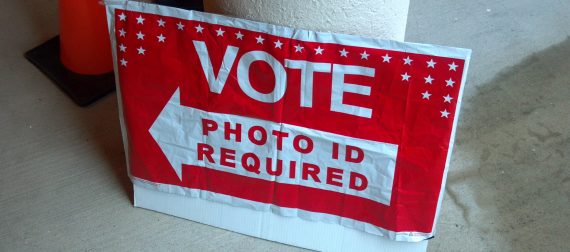

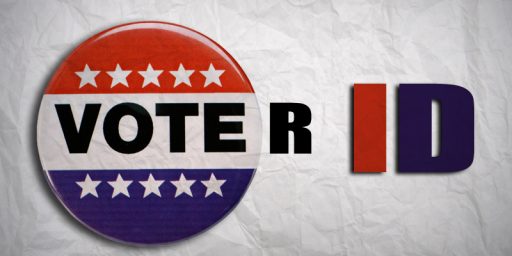
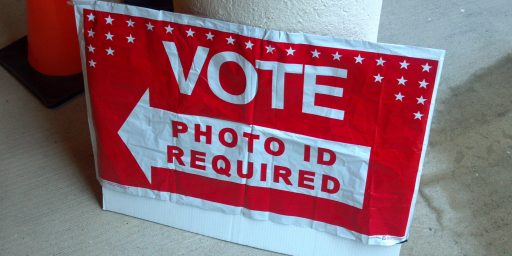
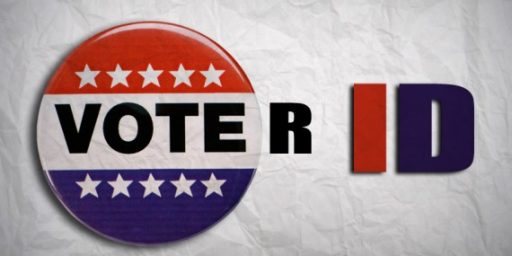
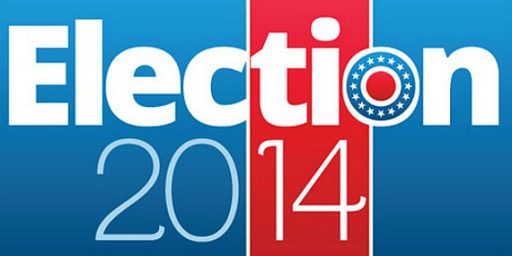
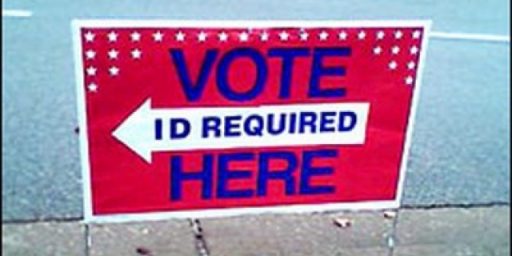
Failure of a plan is not evidence for absence of a plan.
Brownback won Kansas by 35K…and we know at least 22K were unable to vote…we don’t know how many more didn’t even bother trying. I’d say that was perilously close to affecting the race.
More importantly…people were not allowed to vote.
I have a really hard time understanding why that doesn’t matter.
The content of your piece, Doug, does not match the title. Pretty clearly there is evidence of an effect. Certainly enough to encourage Republicans to continue to push for even greater effects from voter suppression.
Voter ID laws did not, as it turned out, affect the outcome of the Virginia senate race. But it was very close, and voter ID laws made it closer than it would have been.
If they had no effect, then the Republicans should have no problem abandoning these voter supression schemes. I’ll bet you $10,000 they won’t.
I think we have to wait for further study. Since races in Kansas, Florida, and North Carolina went GOP by razor thin margins, I’m confident that they will be shown to have an effect. But I’ll wait for scholarly studies.
Right Doug, unless you were one of the many people who was unable to exercise their right to vote due to restrictions imposed because of the fantastical histrionics over “in person voter fraud”, in which case it had a BIG impact on the election for them. But hey, no big deal. It’s just the voting rights of the poor and the elderly and minorities, right? We don’t want them voting anyway.
Doug –
As a limited government type, I’d think you’d be absolutely APPALLED by any law that would limit any citizen’s freedom to vote. Yet, you seem to be saying here “no harm, no foul.”
What gives?
@OzarkHillbilly:
You need to pay closer attention. I guess the NY Times recognized the flaw and adjusted the talking points accordingly. You see, the elderly are actually more likely to vote Republican which undermines the premise that Republicans would want to suppress their votes. So now, you’re supposed to claim that voter id is aimed at disenfranchising young voters.
Notice the shift. Don’t feel bad too bad, though. It’s understandable that you missed this.
@Gavrilo:
I’m assuming most old white people have ID’s because they probably drove at some point, have to buy prescriptions, and…oh yeah…the last election was characterized by a voting population that was predominately old and white.
Wrong question! Let’s try again… Did voter fraud before the draconian changes impact the vote more than the disenfranchised voters in the last election?
And one more question: If the GOP can play fast and loose with constitutionally mandated voting rights then certainly the president should be able to do the same with immigration rights?
Do I hear an “amen!”
@shirt: Except, of course, the president isn’t actually playing fast and loose with the Constitution.
@Scott F.: Ummm… He’s really only for limits on government that affect him directly and other limits are ok?
at least 5 people in Texas didn’t pay attention to the new law enacted in 2011- and they were visibly upset that they couldn’t vote, so said some huffpost blowhard.
other than that it’ was a pretty quiet affair, and hollywood wasted a few bucks on their fluff piece candidate.